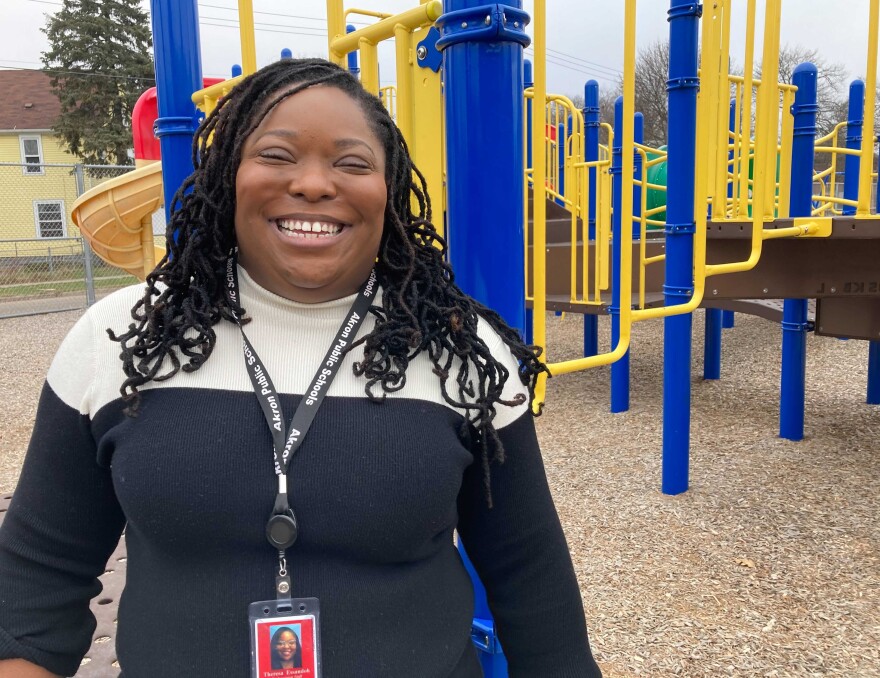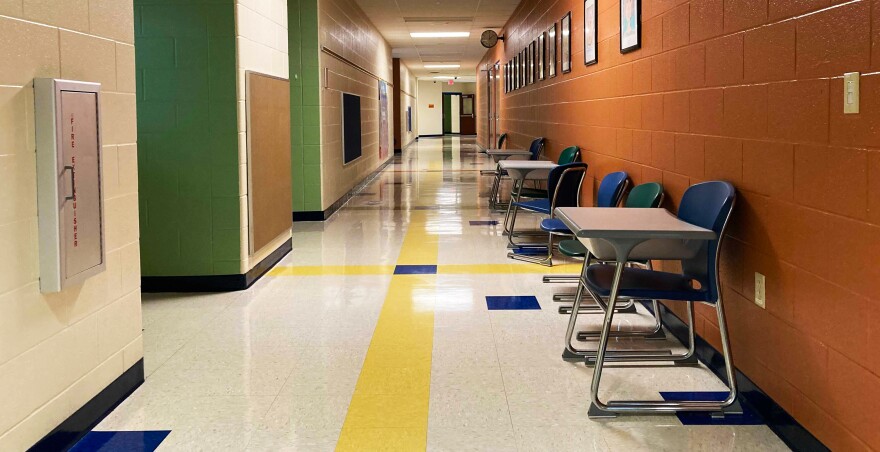It's a school day at Findley Elementary in Akron, but it's eerily quiet, according to Dean of Students Theresa Essandoh.
“This is our playground, and it’s such a sad sight that there aren’t any kids running around,” she said.
The kids are at home in front of computers.

Classes haven’t been held inside this building since last March when the pandemic first hit. Essandoh says the experience has been surreal.
“It’s very Twilight Zone to have empty classrooms and quiet hallways, empty playgrounds and cafeterias,” she said.
She says going remote radically altered how the classroom setting is used to connect with kids.
“The setting was ripped away from us, and teachers are redefining what it means to be a teacher and what it means to teach,” Essandoh said.
Inside the basement classroom
"It's been a challenge," acknowledged Cynthia Rochford, a gifted learning teacher at Portage Path Elementary in Akron.
She says that after 22 years in education, the switch to remote learning was the hardest thing she’s ever done.
“I’m in my basement in a small section that I try to replicate my classroom,” Rochford said.

Sandwiched between a couch and stairs with a dry erase board as a backdrop, she has tried to bring a sense of normalcy to youngsters trapped at home.
“Everyday I get online with my kids, and they want to know when we’re coming back to school," Rochford said.
"They miss their classmates. They want to communicate with them. They miss their teachers. They miss the hugs. I miss the hugs!” she said.
Schooling has come to mean something different for Rochford.
“Their emotional well-being is more important to me than any curriculum that I can teach them,” she said.
Online tools for post-pandemic teaching
That sentiment is echoed by Garth Holman, who teaches social studies at Beachwood Middle School.
He says the pandemic has emphasized the idea that he’s teaching a person not a subject.
“I have students who are concerned about family members," he said. "And they tell you so then you’re emailing them to keep that emotional connection with your students. At my level that’s probably as important as the content.”

He says the pandemic has revealed the resiliency of both teachers and kids.
“We’re in a world where there’s no manual," Holman said.
"There’s no manual to tell us what to do or how to best reach kids, so each teacher’s making conscious decisions about how to build a relationship with kids, how to build trust, how to cover content.”
In addition to teaching middle school, Holman has taught graduate courses in online learning and presented at conferences around the country, showing educators how to integrate technology into the classroom.
He hopes that even after in-person learning returns, the lessons of the pandemic will remain and that teachers have learned to use the tools that suit each student best.
"Working remotely has been the hardest thing I've done."Cynthia Rochford
“I think you’re going to see technology seeping into classrooms and being used to meet the needs of individual kids,” Holman said.
His students are building their own online textbook and using Google Earth to create virtual reality lessons.
He says teachers have worked extraordinarily hard to adapt overnight to a whole new teaching system, which has a silver lining.
“They’ve built it, and now they have the resources that they can go back to," he said.

"Kids can put earphones in and be doing something productive for that kid, while somebody else is talking to the teacher and figuring out how to do something else,” Holman said.
Toward a more human school
Back at Findley Elementary in Akron, Essandoh says remote learning, and the window it provides into the homelife of students, has brought home the need for schools to be more "human" and place more value on the emotional lives of kids.
She says the pandemic deepened her sense that school is not only for teaching kids reading and mathematics, "but to teach them self love, and self esteem, and independence and innovation, and to teach the student and love the student."
"I think there’s been a lot of love,” Essandoh said.
She’s hoping that when kids once again fill the hallways and playgrounds of her school that a renewed love of learning is the lesson from pandemic education.

Learning Curve is a statewide media collaborative focusing on the challenges and opportunities facing K-12 public education in Ohio.
Our partners include WCPN, WOSU, WVXU, WYSO and The Devil Strip.




